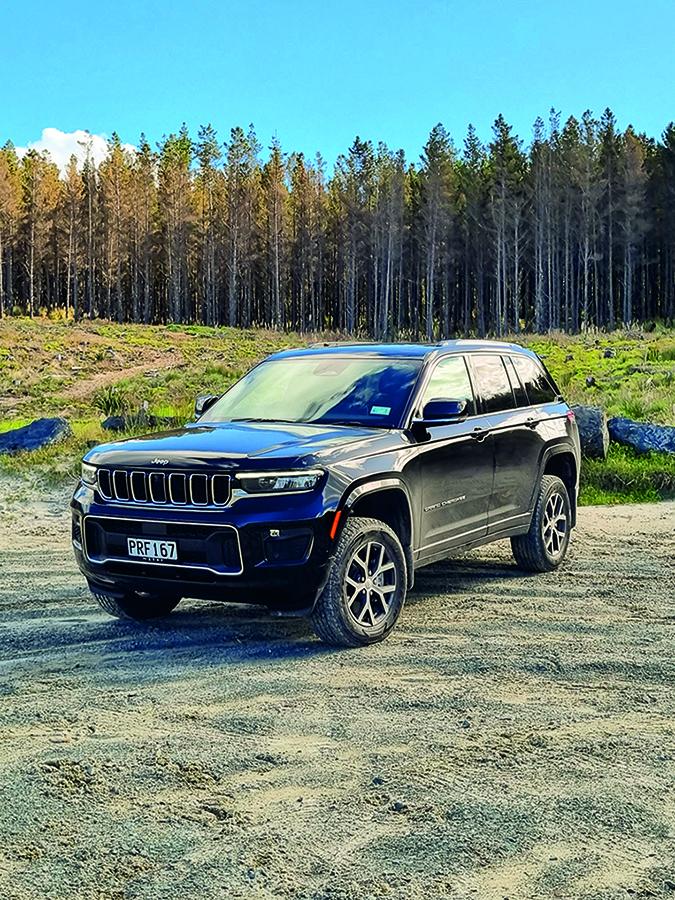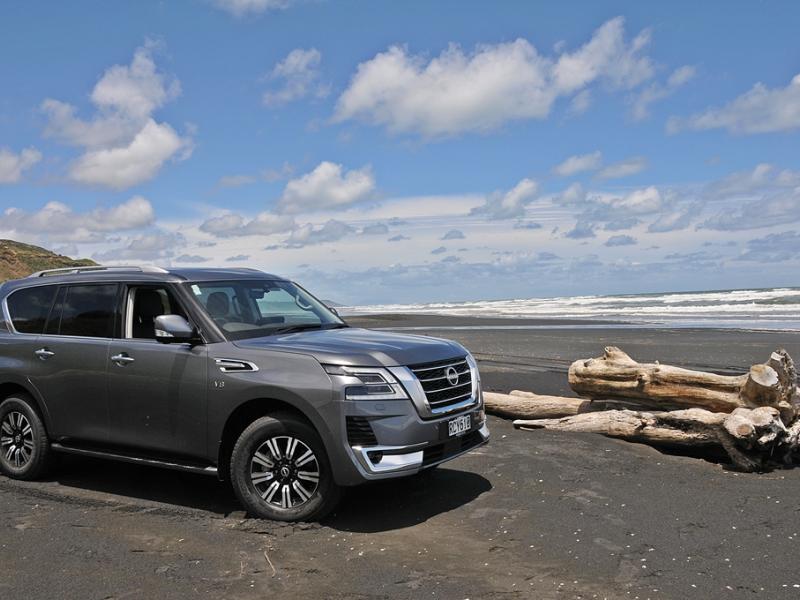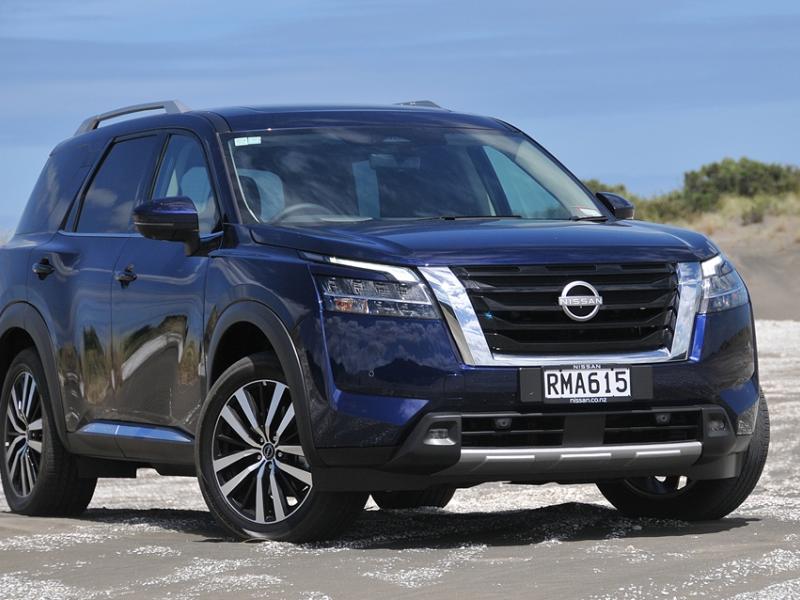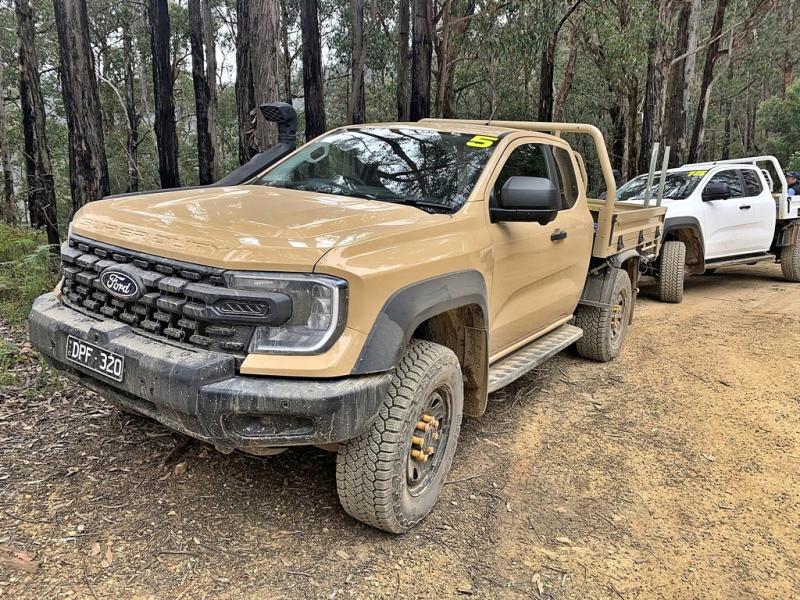We have been debating the merits of five-seat and seven-seat 4WDs. While the Jeep Grand Cherokee L tested last year is an impressive package, and is our Large 4WD of the Year, does less seats mean less appeal?
A little bit of disclosure here, and with apologies to Sir Mix Alot: I like big sevens and I cannot lie, so it seemed almost illogical to give me a seven minus two, but that was the hand I drew, along with the key to the Grand Jeep Cherokee Overland five-seater.
In the Grand Jeep scheme of things, the Overland is second from the top.
You have the entry level Night Eagle in a five-seat, the Overland in a five-seat and the Summit Reserve 4xe (this is the hybrid, which is yet to arrive, but will be here in a matter of weeks) in a five-seat. Limited models only come in seven-seaters, as does the ICE Summit Reserve L. All confused?
Ok, it’s pretty simple: The Grand Cherokee Night Eagle and Overland are the five-seat versions available at time of writing in June.
Price for punch, the Jeep Overland is a heavyweight by anyone’s standards and has everything on board, which puts it well out in front of many of its rivals.
My one and only real criticism of the five-seat Grand Overland is that sometimes, things aren’t where you expect them to be – could be physically, could be electronically – but it’s a ‘9-times-out-of-10-there-somewhere’ situation.
And that last one time? You probably don’t need whatever that thing may be anyway.
Bang for buck then, the Overland is loaded and for the price you pay, the fact that everything is there makes the ‘Five Grand’ a steal.
There’s no denying the new shape of the Grand Cherokee is a little polarising, particularly with older model Jeep owners who feel the slimmer look at the front end of the current model doesn’t really celebrate the heritage of the brand.
It does, however, make for a more efficient vehicle, just by reducing the front face of the Jeep. The Five Grand’s quoted 9.9 litres per 100km is surprisingly easy to reach and maintain, as is the 9.6 litre figure we saw and for a vehicle of the Grand Cherokee’s size and capability, that’s more than acceptable in our book.
And if we have low (-ish) fuel figures, it stands to reason that we will have low (-ish) emissions and while the difference is not stellar between the seven seat’s 243 and the five-seater’s 236gm/km.
This leads nicely into the other significant differences between the five- and seven-seater Jeeps – other than the gaining of a significant amount of boot space – at the expense of two seats of course.
Externally, the five-seat Overland is a little less shiny than the full-fat Summit Reserve seven-seater.
Exterior accents are chrome rather than polished chrome, the door cladding is merely painted as opposed to being painted bright on the Summit Reserve.
The five-seat Overland takes gloss black roof rails on a body-coloured roof, while the Summit Reserve goes with either fine silver or gloss black rails on a black roof. And finally, the wheels.
Overland takes a standard 20-inch polished alloy with an easy-to-clean design, while the Summit Reserve takes a 21-inch rim with a slightly fussier design.
Internally, the changes are a bit more dramatic: different leather grades for the seats, the floor mats are not as sophisticated for the five-seater, the headliner is a basic black – though we still get the massive expanse of opening sunroof, so it’s not really a big deal.
The steering wheel is Technoleather-clad in the Overland rather than the traditional wood leather in the Summit Reserve. Oh, and the sill plates. Nice and bright in the Overland but illuminated in the Summit Reserve.
Significant spec variations, but hardly monumental until we mention the satellite navigation which is contained in the driver’s cluster display for the seven-seater and within the central screen for the Overland.
You also have the more conventional nine speaker audio system with its 506-watt amp in the Overland. Who really wants 19 speakers anyway? Oh right, Summit Reserve drivers.
More critically, the Overland does not have the interior rear facing camera of the Summit Reserve nor the night vision capability.
Although the adaptive cruise control and lane departure warning system is on board the Overland as part of a comprehensive ADAS package, it’s not quite the Level 2 autonomous Active Driving Assist package of the Summit Reserve.
Otherwise, the equipment and features are line ball, sharing the Pentastar, 3.6-litre petrol V6 with variable valve timing, which has more than enough grunt to cope with all terrain travel.
Jeep has adopted an eight-speed auto transmission with paddle shifters for the Grand Cherokees, delivering smooth shifts even when road driving…ah…aggressively.
Unlike some fussy 10-speeds, the eight is ‘comfortable in its cogs’ showing confident and unruffled gear selections, making for an altogether refined riding experience.
Admittedly, Jeeps have a reputation for all-round ruggedness and ‘go-anywhere-ability, and there are some who might suggest the Grand is a little too refined to go on the hardened trails the American brand’s marketing tends to extoll.
The fact that we don’t really have Rubicon (rock) trails is kind of irrelevant. I can’t think of a trail in New Zealand I would not be comfortable taking a Jeep through.
This includes Skipper’s Canyon, the Nevis Road, or the violent third world terrains of State Highway One between Takanini and Ramarama.
One of the most impressive – and helpful – features of the Grand Cherokee which contributes to its formidable off-road ability and its fuel efficiency, is the variable height suspension adjustability.
Jeeply-called Quadra-Lift air suspension, this adjustable height control allows for 104mm of height variation and can be employed while on the move.
Quadra-Lift air is usually accompanied by another bit of Jeep-speak: Selec-Terrain which allows for confident driving on multiple surfaces.
The Grand Cherokee’s first line of defence in terms of four-wheel-drive however, is a variation of the tried-and-true Quadra-Trac system, in this case Quadra-Trac II.
Quadra-Trac II is a more sophisticated system than Quadra-Trac I (well, duh) and is different again from Quadra-Drive.
Quadra-Trac I and II systems send engine torque in a 48/52 per cent split front and rear, but Quadra-Trac II has an electronically controlled clutch pack in the centre differential, which allows the torque split ratio to change: up to 100 per cent of torque can go to one axle if required.
Quadra-Trac II has a 2.72:1 low gearing range for hard core 4WD applications and hill descent control to work with the brake-based traction system and open differentials.
All of which was just a shade of overkill given the ‘off-road’ work I was doing. However, I did manage to find some serious gravel, a beach escape with soft sand and a fair few hours of brutal tarmac taming to test the Jeep’s mettle.
Drive-wise the Overland feels massive but has all the nimbleness and agility of a mid-sized SUV which has seen considerable attention paid to road holding and drivability.
You are riding in the lap of luxury on either the heated or cooled seats with massage function and ergonomically, everything falls to hand well, not surprisingly given the adjustability of those seats.
And as for switching between modes and heights, Jeep couldn’t really make things any more fool-proof – I mean, if I can do it…
I still like my seven-seaters, but with Jeep, just maybe I could be convinced to forego that third row.






